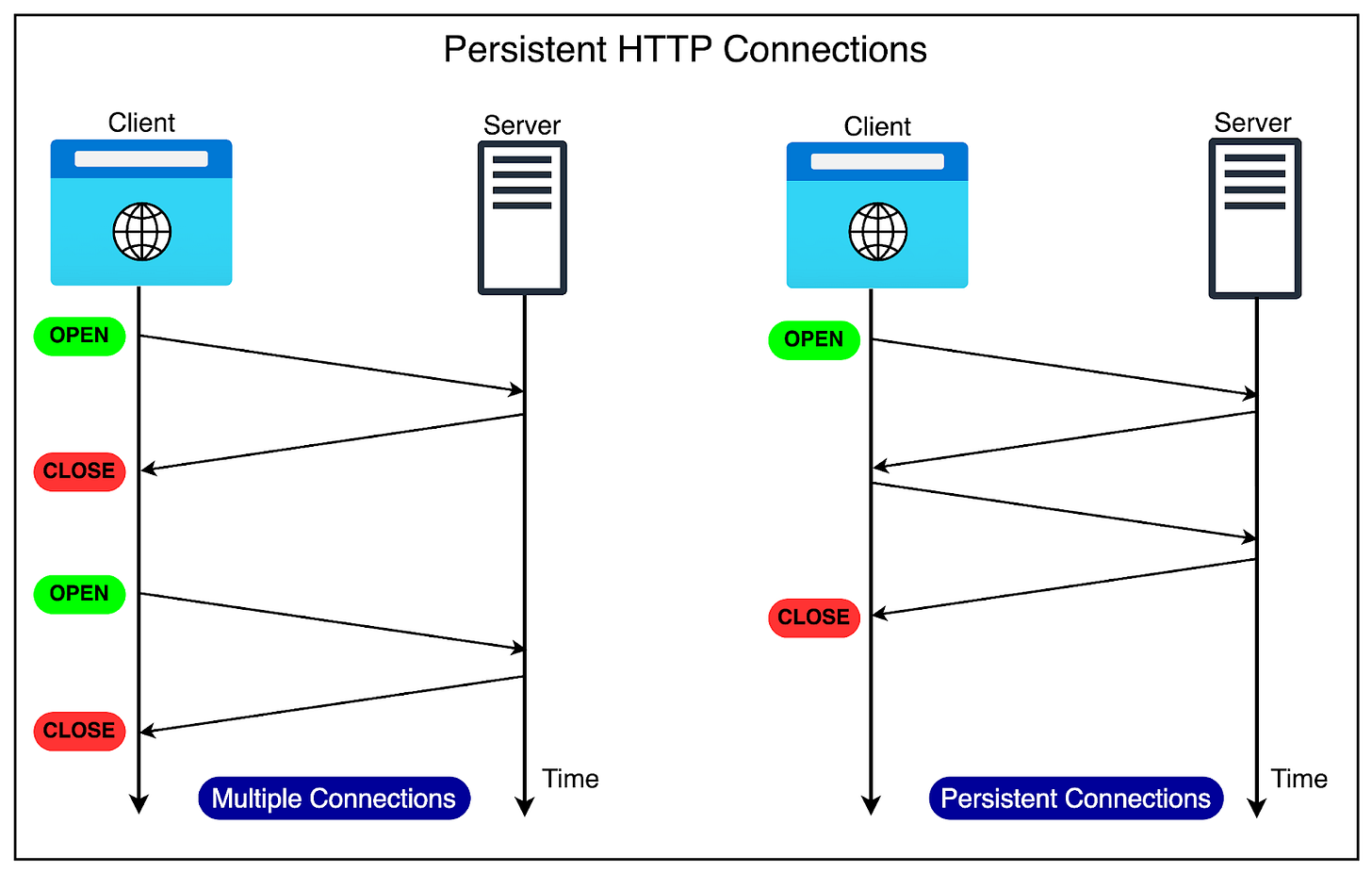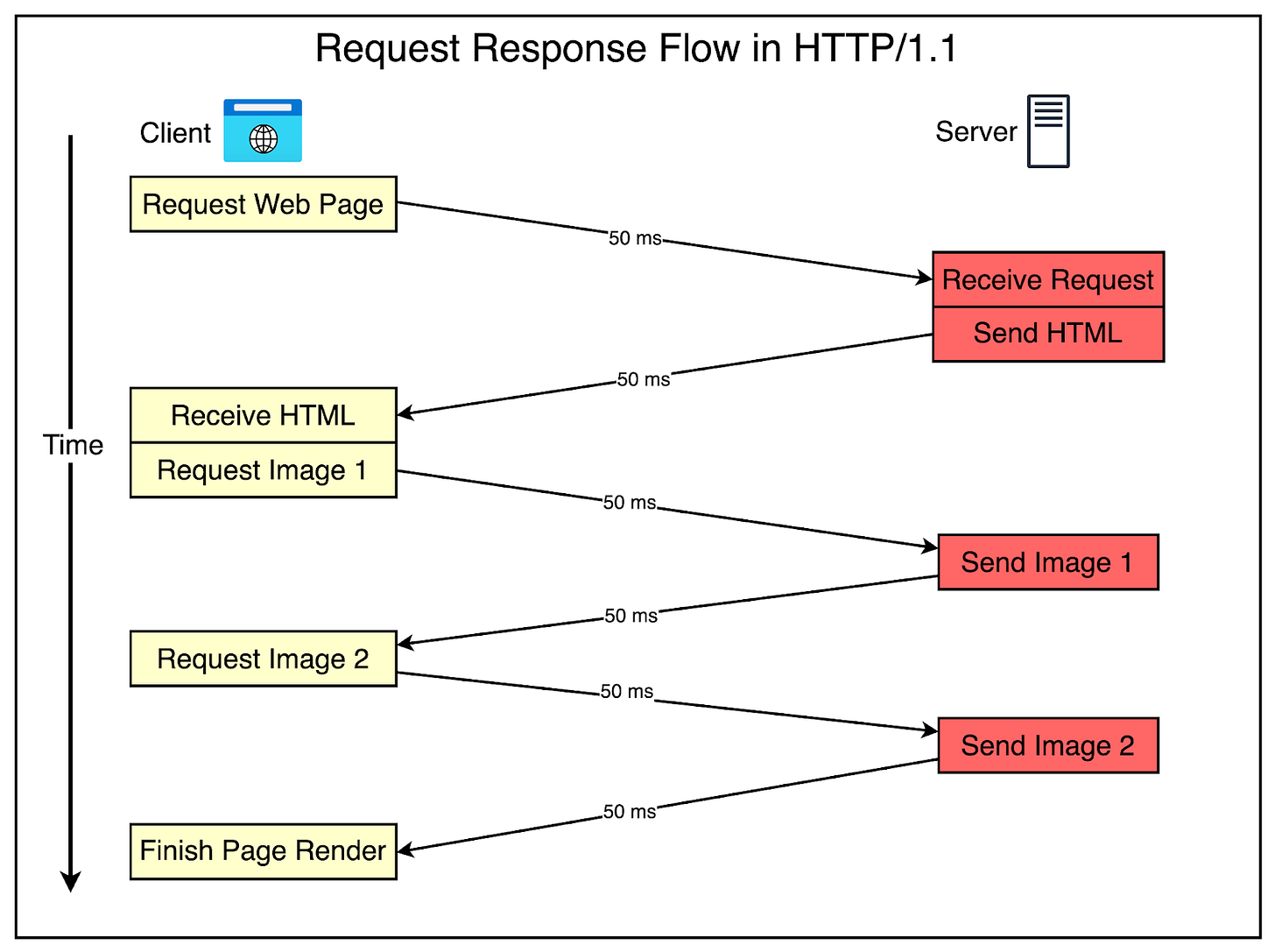HTTP1 vs HTTP2 vs HTTP3 - A Deep Dive
What has powered the incredible growth of the World Wide Web?
There are several factors, but HTTP or Hypertext Transfer Protocol has played a fundamental role.
Once upon a time, the name may have sounded like a perfect choice. After all, the initial goal of HTTP was to transfer hypertext documents. These are documents that contain links to other documents.
However, developers soon realized that HTTP can also help transfer other content types, such as images and videos. Over the years, HTTP has become critical to the existence and growth of the web.
In today’s deep dive, we’ll unravel the evolution of HTTP, from its humble beginnings with HTTP1 to the latest advancements of HTTP2 and HTTP3. We’ll look at how each version addressed the limitations of its predecessor, improving performance, security, and user experience.
By the end of this article, you’ll have a solid understanding of the key differences between HTTP1, HTTP2, and HTTP3, helping you make informed decisions when designing web applications.
HTTP1 - The Foundation
HTTP/1 was introduced in 1996. Before that, there was HTTP/0.9, a simple protocol that only supported the GET method and had no headers. Only HTML files were included in HTTP responses. There were no HTTP headers and no HTTP status codes.
HTTP/1.0 added headers, status codes, and additional methods such as POST and HEAD. However, HTTP/1 still had limitations. For example, each request-response pair needed a new TCP connection
In 1997, HTTP/1.1 was released to address the limitations of HTTP/1. Generally speaking, HTTP/1.1 is the definitive version of HTTP1. This version powered the growth of the World Wide Web and is still used heavily despite being over 25 years old.
What contributed to its incredible longevity?
There were a few important features that made it so successful.
1 - Persistent Connections
As mentioned, HTTP started as a single request-response protocol.
A client opens a connection to the server, makes a request, and gets the response. The connection is then closed. If there’s a second request, the cycle repeats. The same cycle repeats for subsequent requests.
It’s like a busy restaurant where a single waiter handles all orders. For each customer, the waiter takes the order, goes to the kitchen, prepares the food, and then delivers it to the customer’s table. Only then does the waiter move on to the next customer.
As the web became more media-oriented, closing the connection constantly after every response proved wasteful. If a web page contains multiple resources that have to be fetched, you would have to open and close the connection multiple times.
Since HTTP/1 was built on top of TCP (Transmission Control Protocol), every new connection meant going through the 3-way handshake process.
HTTP/1.1 got rid of this extra overhead by supporting persistent connections. It assumed that a TCP connection must be kept open unless directly told to close. This meant:
No closing of the connection after every request
No multiple TCP handshakes.
The diagram below shows the difference between multiple connections and persistent connections.
2 - Pipelining
HTTP/1.1 also introduced the concept of pipelining.
The idea was to allow clients to send multiple requests over a single TCP connection without waiting for corresponding responses. For example, when the browser sees that it needs two images to render a web page, it can request them one after the other.
The below diagram explains the concept of pipelining in more detail.
Pipelining further improved performance by reducing the latency for each response before sending the next request. However, pipelining had some limitations around head-of-line blocking that we will discuss shortly.
3 - Chunked Transfer Encoding
HTTP/1.1 introduced chunked transfer encoding that allowed servers to send responses in smaller chunks rather than waiting for the entire response to be generated.
This enabled faster initial page rendering and improved the user experience, particularly for large or dynamically generated content.
4 - Caching and Conditional Requests
HTTP/1.1 introduced sophisticated caching mechanisms and conditional requests.
It added headers like Cache-Control and ETag, which allowed clients and servers to better manage cached content and reduce unnecessary data transfers.
Conditional requests, using headers like If-Modified-Since and If-None-Match, enabled clients to request resources only if they had been modified since a previous request, saving bandwidth and improving performance.
The Problem with HTTP/1.1
There’s no doubt that HTTP/1.1 was game-changing and enabled the amazing growth trajectory of the web over the last 20+ years.
However, the web has also evolved considerably since the time HTTP/1.1 was launched.
Websites have grown in size, with more resources to download and more data to be transferred over the network. According to the HTTP Archive, the average website these days requests around 80 to 90 resources and downloads nearly 2 MB of data.
The next graph shows the steady growth of website size over the last 10+ years.

This growth exposed a fundamental performance problem with HTTP/1.1.
The diagram below explains the problem visually.






